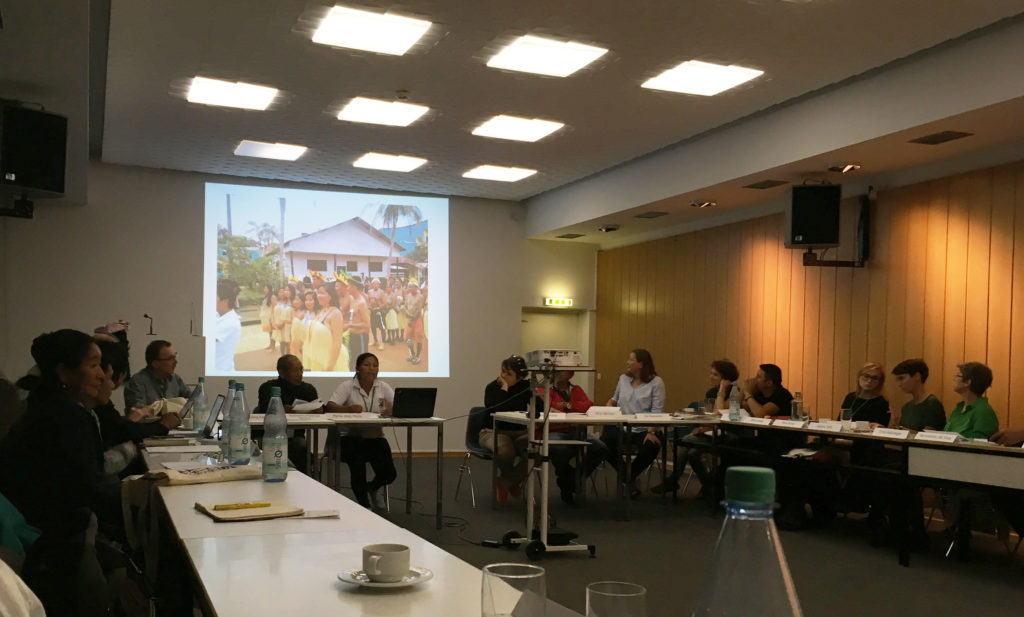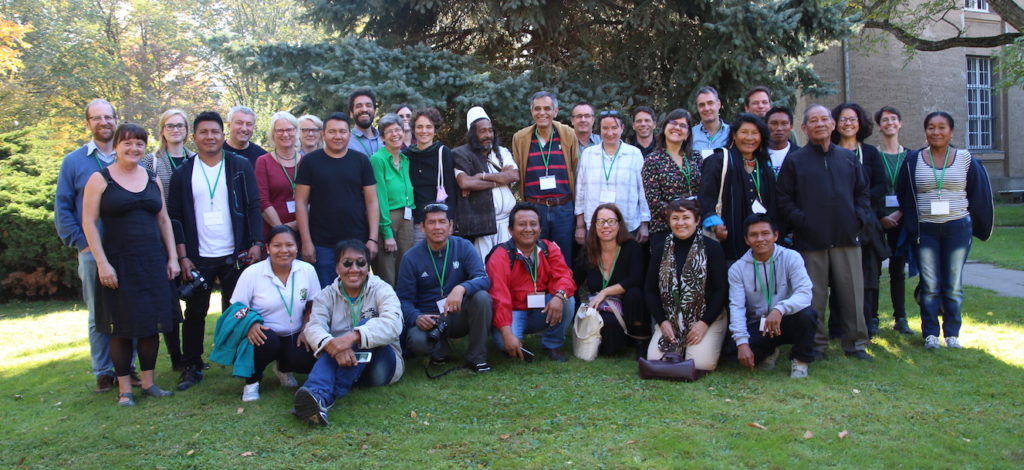
Luciana Martins
From 11 to 13 October 2018, indigenous and non-indigenous researchers and curators gathered at the Ethnological Museum in Berlin to discuss the opportunities and challenges of co-curating ethnographic collections in the new Amazonian gallery at the Humboldt Forum, due to open in 2019. During three days of unexpectedly hot and sunny weather, participants remained indoors debating intensely key questions: How can museum collections be more openly available to indigenous researchers? How can collections from Amazonia be appropriately preserved? What are the potentialities and drawbacks of digital knowledge bases? What is the value of historic collections to contemporary indigenous peoples? How can educational experiences based on objects in Amazonia be connected to public engagement activities in Berlin? What are the advantages and risks of using audio-visual resources to enable the visualization and circulation of ways of making, using and understanding artefacts? What is the role of mediating institutions (universities, NGOs, etc) in establishing collaborative research projects with museums and source communities, and what are their pitfalls? What is the role of community museums and how can the Berlin Museum work collaboratively with them?
Sharing their experiences, ideas and reflections (in Spanish, Portuguese and German), participants discussed collaborative projects involving indigenous communities in Brazil, Colombia, Venezuela and Mexico, with museums and universities in Germany, the UK and US. What became evident was the dynamism of the indigenous initiatives and their willingness to reconnect with the collections in European and North American museums. These initiatives aimed to reanimate museum artefacts through a revalorization of their respective ways of knowing and inhabiting the world. For indigenous communities, such artefacts are relevant to the extent that, through them, and their associated documentation, the languages, chants, and ancestral knowledge are reactivated, becoming a catalyst for strengthening their social, environmental and cultural heritage. Recognition of their rights to auto-representation is key to a successful cross-cultural exchange. While the asymmetries of power reflected in the making of the collections are clearly still present in varying degrees, the symposium showed that building bridges is still possible, and much desired. Concluding with the “dance of the moths,” a performance which celebrated the transformational possibilities of transatlantic crossings, the main message of this event was that cross-cultural dialogue is central to the process of displaying historic ethnographic collections. Dr Andrea Scholz, the Humboldt Forum curator who organised this symposium, is to be commended for her openness and determination to enable other voices to be heard. While the City Palace that will house the Humboldt Forum has generated considerable controversy, let us hope that its displays reflect the novel curatorial practices discussed at this symposium.

Workshop participants. Photo © Natalia Paiva